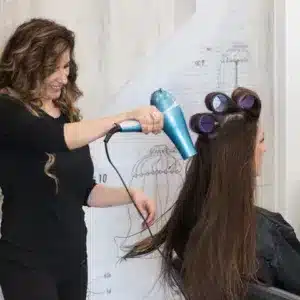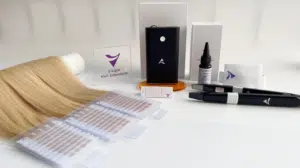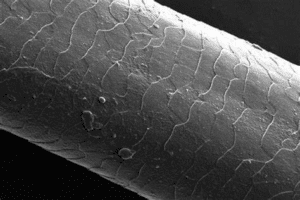Have you heard clients or colleagues debating clip in vs sew in extensions? Both methods are popular but serve different needs. Understanding the differences helps salons, stylists, and wholesalers guide customers wisely.
Clip in extensions are temporary and versatile, perfect for occasional wear. Sew in extensions are semi-permanent, long-lasting, and secure. The best choice depends on lifestyle, hair type, and budget.
In this article, I will compare clip in vs sew in in detail. By the end, you will know their features, pros, cons, and the best situations to use each.

What are clip in hair extensions?
Do your clients want instant results without a salon visit? Clip in extensions are the fastest way to add length and volume.
Clip in extensions are wefts of hair with attached clips. Clients snap them close to the scalp for immediate transformation. They are reusable, non-damaging, and ideal for short-term wear
Dive deeper
Definition
Clip in extensions are pressure-sensitive hair wefts. They attach in sections to natural hair using lightweight clips. They are designed to be installed at home without professional help.
Advantages of clip ins
- Instant application, no tools or chemicals
- Affordable compared to permanent methods
- Completely non-committal—remove whenever desired
- Safe for natural hair, no braids, glue, or tension
- Flexible styling for special occasions, events, or photoshoots

Disadvantages of clip ins
- Not suitable for sleeping, swimming, or gym sessions
- Can slip if installed incorrectly
- Less natural feel if clips are visible
- Provide temporary wear, not a permanent solution
| Feature | Clip In Extensions |
|---|---|
| Longevity | 6–12 months with proper care |
| Installation | DIY at home, 5–10 minutes |
| Comfort | Lightweight but must be removed at night |
| Maintenance | Minimal—wash occasionally, store carefully |
| Best for | Clients seeking flexibility or occasional glam |
Clip ins are often the first extension type a client tries before committing to professional installations.
What are sew in extensions?
Clients who want a secure, long-term option often turn to sew ins. This method provides durability and consistency.
Sew in extensions involve braiding natural hair into cornrows and sewing hair wefts onto the braids with a needle and thread. This method creates a strong foundation and can last for weeks
Dive deeper
Definition
Sew in extensions use natural hair as a base. The hair is braided into small cornrows, and the wefts are stitched onto the braids. This creates a tight, durable bond without glue or heat.
Advantages of sew ins
- Last 6–8 weeks before a move up
- Very secure, no risk of slipping
- Suitable for thicker or coarser hair types
- Allow regular washing, styling, and heat use
- Provide consistent fullness across the head

Disadvantages of sew ins
- Installation takes 2–4 hours
- Require a skilled stylist
- Tight braiding may cause discomfort
- Not ideal for very fine or fragile hair
- Move ups require time and cost every 6–8 weeks
| Feature | Sew In Extensions |
|---|---|
| Longevity | 6–8 weeks before adjustment |
| Installation | 2–4 hours, professional only |
| Comfort | Secure, but initial tightness possible |
| Maintenance | Needs professional upkeep |
| Best for | Clients seeking long-lasting, full hairstyles |
Sew ins are ideal for clients who want reliability, but they require professional expertise and aftercare.
Clip ins vs sew in?
Which is truly better for your clients: clip ins or sew ins? Both meet different needs.
Clip ins are non-permanent, quick, and cost-effective. Sew ins are semi-permanent, professional, and secure. The right choice depends on how often clients want to wear extensions, their budget, and their styling habits.
Dive deeper
Key Comparisons
- Longevity: Clip ins last hours per wear; sew ins last weeks.
- Cost: Clip ins = lower upfront; sew ins = higher salon cost but longer wear.
- Installation: Clip ins = DIY; sew ins = stylist only.
- Comfort: Clip ins are lighter; sew ins are more stable.
- Lifestyle: Clip ins suit occasional wear; sew ins suit everyday styling.
| Factor | Clip In Extensions | Sew In Extensions |
|---|---|---|
| Wear duration | Hours to 1 day | 6–8 weeks |
| DIY friendly | Yes | No, stylist required |
| Cost | Low upfront | Higher but durable |
| Hair safety | No stress on natural hair | Tension if braided too tightly |
| Best for | Occasional events, casual use | Daily styling, consistent looks |
Clip ins are a flexible accessory. Sew ins are an investment service. Salons and wholesalers often carry both to serve different needs.

What is better, sew in or clip in extensions?
Is one method really better than the other? The truth is, “better” depends on the client’s expectations.
Sew ins are better for clients who want long-term results, daily wear, and salon-quality fullness. Clip ins are better for clients who want affordable, temporary styling flexibility.
Dive deeper
Best choice for salons
Offer sew ins as premium services and clip ins as retail products. This captures both service-based and product-based revenue.
Best choice for wholesalers
Stock both types. Clip ins sell online to consumers, while sew ins are bulk-ordered by professional salons.
Best choice for clients
- Clip ins: Weddings, parties, photoshoots, experimenting with new looks.
- Sew ins: Long-term wear, thicker hair types, or clients who want consistent fullness.
Both serve different purposes. Instead of choosing one, many salons and stylists use both options depending on the client.

My opinion
As a manufacturer, I see both clip ins and sew ins as valuable. Clip ins are excellent for retail markets and quick styling. Sew ins are essential for professional salons offering premium services. They complement each other, and stocking both ensures you never miss a client’s need.
FAQ
Q: Can clients sleep in clip in extensions?
A: No. Clip ins must be removed before bed to prevent tangling and scalp discomfort.
Q: How long do sew ins last?
A: Typically 6–8 weeks before a move up. Clients should not exceed this to avoid scalp stress.
Q: Do clip ins damage natural hair?
A: Not if installed and removed properly. They are one of the safest extension types.
Q: Which costs more in the long run?
A: Sew ins, because they require stylist installation and move ups. Clip ins are a one-time purchase but wear shorter per use.
Q: Can sew ins cause breakage?
A: If braids are too tight or left too long, they may cause stress. Professional application prevents this.
Q: Which is better for thin hair?
A: Clip ins may feel lighter and safer. Sew ins can be used with caution, but only with proper braid tension.
Q: Can both be made from full cuticle hair?
A: Yes. High-quality clip ins and sew ins can both be manufactured with luxury-grade full cuticle hair for 1–2 years of wear.
Q: Which is more popular in wholesale?
A: Clip ins are strong in online retail. Sew ins are preferred by salons. Both have steady demand.
Conclusion
Clip ins vs sew ins is not about superiority. Each has strengths. Clip ins provide flexibility and affordability. Sew ins provide durability and salon-level results. The best choice depends on client lifestyle and business goals.
Hibiscus Hair Manufacturer has been dedicated to producing high-quality hair extensions for 25 years and is a recognized leader in the industry. If you are interested in finding a reliable hair extensions supplier and wholesale for your brand, please visit our website for more information:
HOME





